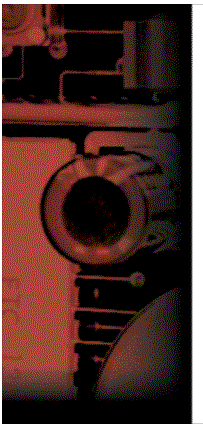  |
Course 1593—Five
days—Instructor-led
Building Collaborative Solutions by Using Microsoft Outlook 2000Table of Contents Introduction At Course Completion Microsoft Certified Professional Exams Prerequisites Course Materials and Software Course Outline IntroductionThis course will enable developers to create collaborative solutions by using Microsoft® Outlook® 2000 as the front-end application and Microsoft Exchange Server and Microsoft SQL Server™ as the primary back-end applications. This five-day instructor led course is a combination of lecture, interactive demonstrations, video clips, and hands-on labs.At Course CompletionAt the end of the course, students will be able to:
Return to top Microsoft Certified Professional ExamsThis course will help the student prepare for the following Microsoft Certified Professional exam:
Return to top PrerequisitesCourse 1080, Essentials of Microsoft Visual Basic® Scripting Edition 3.0, or equivalent knowledge Course 1303, Mastering Microsoft Visual Basic 6 Fundamentals, or equivalent knowledge, or course 1301, Mastering Microsoft Office 2000 Solution Development The course materials and lectures are in English. To benefit fully from the instruction, students need an understanding of the English language and completion of the prerequisites. Course Materials and SoftwareThe course materials are yours to keep.You will be provided with the following software for use in the classroom:
Return to top Course OutlineDay 1Module 1: Introduction to Collaborative Solution DevelopmentTopicsOverview of collaborative solutionsDesigning a collaborative solution Overview of Outlook 2000 features Developing applications with Outlook 2000 Using the built-in features of Exchange Server Planning the testing environment Module 2: Creating and Managing Public FoldersTopicsIntroduction to public foldersCreating public folders by using Outlook 2000 Using public folder servers Using Exchange Server public folder replication Module 3: Creating Forms by Using Microsoft Outlook 2000TopicsIntroduction to Outlook 2000 formsBuilding a simple Outlook 2000 form Working with controls Working with fields Performing actions Using Office document forms Persisting form design Day 2Module 4: Working with Views by Using Microsoft Outlook 2000TopicsCustomizing viewsCustomizing table views Working with custom views Module 5: Introduction to Programming Microsoft Outlook 2000TopicsIntroduction to the Outlook object modelUsing VBScript to develop in Outlook 2000 Using the Outlook object model Module 6: Programming Forms by Using Microsoft Outlook 2000TopicsWorking with Outlook 2000 itemsUsing Outlook 2000 form events Using mail messages Creating a meeting or appointment Assigning, delegating, or self-imposing a task Creating a contact Creating a distribution list Creating a journal entry Creating a note Creating a post to a public folder Day 3Module 7: Working with the Microsoft Outlook 2000 Object ModelTopicsUsing the Application objectUsing the NameSpace object Using the MAPIFolder object Working with Outlook 2000 items programmatically Using the Explorer object Using the Inspector object Working with the Outlook bar Module 8: Creating a Digital DashboardTopicsCreating a Digital DashboardCreating folder home pages Using the Outlook view control Customizing Outlook Today Day 4Module 9: Creating Team Folder ApplicationsTopicsIntroduction to Outlook 2000 team folder applicationsDeploying the Team Folders Wizard Using the Team Folder Wizard Customizing Team Folder Templates Module 10: Creating COM Add-insTopicsIntroduction to COM add-insDeveloping a COM add-in Working with a COM add-in project Working with command bars Creating custom property pages for Outlook 2000 Module 11: Accessing Data from the Outlook 2000 ClientTopicsIntroduction to data access in Outlook 2000 solutionsUsing Office Web components Using ADO Retrieving data from an ADO data source Updating data in an ADO data source Accessing Exchange Server information Day 5Module 12: Integrating Collaboration Data Objects Within an Outlook 2000 SolutionTopicsIntroduction to CDOUsing the CDO Library in collaborative applications Working with messages and message properties Working with the CDO object model Using the CDO Rendering Library in collaborative applications Module 13: Using the Microsoft Exchange Server Event ServiceTopicsIntroduction to the Exchange Server Event ServiceIntroduction to event scripts Writing an event script Debugging event scripts Using event scripts in solutions Exchange Server routing Module 14: Site Server IntegrationTopicsExpanding search optionsCreating a custom search solution Building search pages Module 15: Deploying an Outlook 2000 SolutionTopicsDeploying an applicationTesting the installation
|